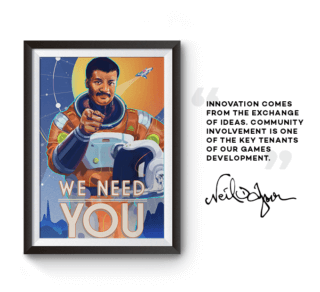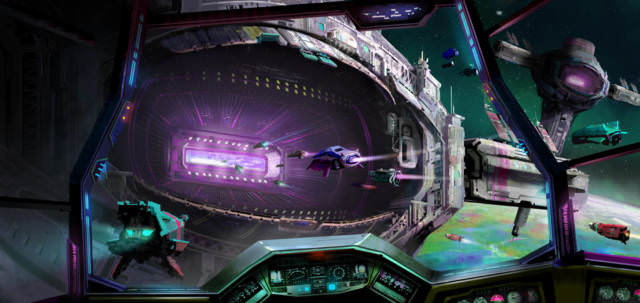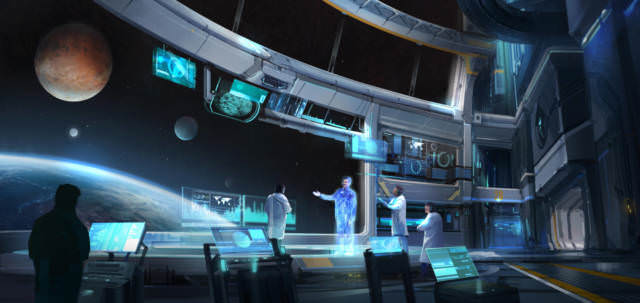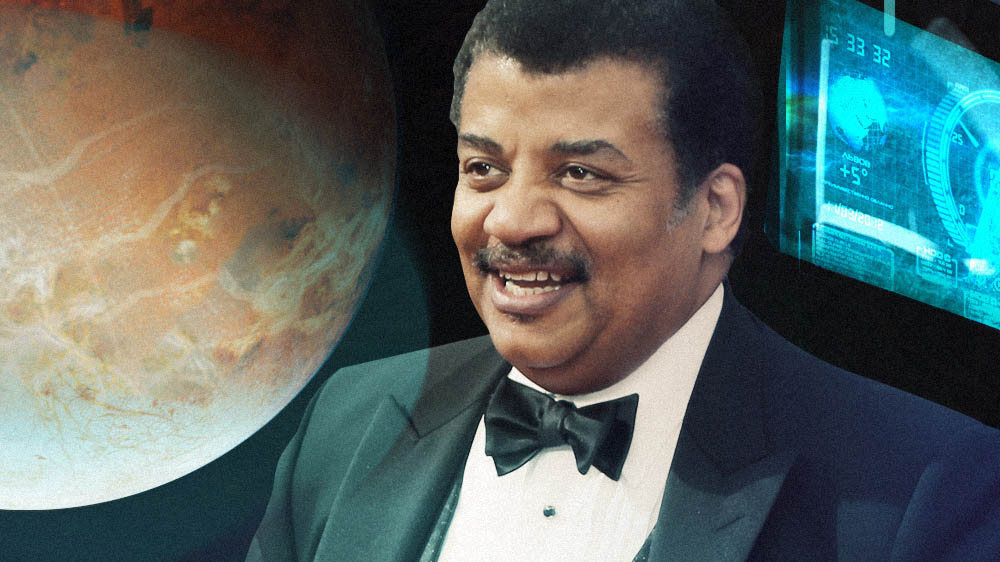Game developer Space Media Ventures is tapping into the celebrity star power of Neil deGrasse Tyson to partner with the world-renowned astrophysicist and deliver a sense of wonder about the universe and beyond with its debut IP Space Odyssey.

The galactic real-time strategy game, which will include experiences playable on console, PC, mobile, VR and AR, allows users to explore worlds, colonize planets, create and mod in real-time and discover unique lifeforms with science-based missions, driven by real physics, and inspired by science.
“It’s exciting to be part of the creative team bringing this educational game based on real science, driven by real physics, to life,” Tyson, an advisor to the title, said in a statement. “Space Odyssey embodies a shared vision of creators, storytellers and science lovers who want to get people of all ages into space and exploration and encourage curiosity and imagination.”
Space Odyssey will be coming to a galaxy near you after reaching its Kickstarter crowdfunding targets last week. Backers, who have contributed over a combined $720,000 to date since pre-sale started on Kickstarter and Indiegogo during E3, will have access to the beta version of the game, tentatively scheduled for December 2018.
AListDaily sat down with Space Odyssey creative director Mark Murphy and strategic partnerships director Scott Bobrow to discuss how the flagship title came together, what to expect from the gaming experience and the marketing opportunities Tyson and the IP present.
How did you develop the idea for Space Odyssey with Neil deGrasse Tyson?
Scott Bobrow: This was a happy confluence. We had been thinking about the notion of space-based, word-building experiences both for PC gaming and VR. By happy accident, our other partner, Greg O’Connor, had a relationship with Tyson. Needless to say, there would be no other person who would be better to have on board to champion this than him. We initiated a discussion with him, and he was very interested about the idea of making space and science education available to the masses in an engaging and entertaining way. We agreed that using gaming and VR environments and formats would be a very impactful way to accomplish that mission.
Mark Murphy: Neil is a partner with us in the project, too. With his blessing, we built out a multiplatform approach. The core game itself is downloadable to PC and it is Mac supported. We’re going to have component pieces that can be done individually but also link into the major narrative of the entire Space Odyssey franchise. We also have partnerships we’re finalizing for the first set of VR missions. Furthermmore, we’re going to have aspects of core game compatibility on mobile, and will continue to expand the mobile accessibility and playability as we continue to go to beta on the core game. What we’re trying to do is make this accessible to a broad audience, but also to really amplify the sense of adventure, innovation and the future using defining technology on the market today.
How has Tyson been involved in implementing real science and physics in the game while playing an integral part of the creative committee guiding the game?
Murphy: Neil’s very hands-on. We have a very collaborative working relationship. Conceptually, we’ll come up with ideas. One of the things that we’re launching as a really nice driving force, that is impactful on the gaming side and exceptionally relevant on the science side, is a primordial engine—the physics engine that is essentially driving the game mechanics with Unreal—and really employing some cutting-edge and collaborative play. It’s all real physics and real science. That was a core element to Neil. He’ll also challenge us with ideas. With Neil as a “visionary in chief,” if you will, we’re very aware at all times to fully incorporate actual physics and science into the experience.

Why are you using virtual, augmented and mixed reality to complement the PC version?
Murphy: The idea behind the whole Space Odyssey franchise is that it will continue to expand, just like the universe, in complementary ways. As we look at AR, VR and MR, those things will become more interactive as the game grows, and it’s possible that the entire experience becomes VR or AR over time. At this point, what we want to do is show different engagements and challenges that fit the technology and try to unify them. There is an evergreen nature to this. As technology expands, the breadth and vision can surprise the people that are a part of our community.
What are the branding, marketing and sponsorships avenues the game has opened thanks to a celebrity astrophysicist? How are you navigating these waters to ramp up marketing?
Bobrow: In the game, we have a couple of endemic marketing partnerships with the integration of the National Space Society, and we have a relationship with Sky & Telescope Magazine. Neil is unique because he’s probably the only rockstar astrophysicist in the world. We’re really fortunate to have him as an advocate. He’s being well-received by partners and sponsors knowing that he’s on board. It lends itself to interesting partnerships and franchise extensions. We’re really just getting going with that. The game is the anchor. The VR missions will be on a major platform. They’re quite enamored with Neil and had an interest in educating about space. There are other brand extensions we have in the works, but it’s a little premature to speak to that.
Murphy: We’re very careful with the partnerships and sponsorships that we bring forward so that they feel organic to what we’re building. They have to complement the whole core concept of futurism. Anything we bring forward needs to adhere to that. Neil isn’t about selling his brand. This is really about a way to expand on education and engaging the future of science exploration. We might be slow on announcing these kinds of deals because they have to be really good.
Who is the core audience you’re marketing to?
Murphy: The core audience is pretty broad. If you are eight or 80 years old, you can play an engagement game. We’re creating a sandbox feel so that you’re actually able to play more in real-time.
What are the opportunities for scaling?
Bobrow: We’re also exploring location-based experiences that would potentially fit in malls, museums and science centers. It would allow us to bring real-world exhibits that are based on the franchise. That could include VR experiences, film and other attractions.

Murphy: Educational outreach is really important as well. We’re looking at classroom engagement and a way to work in those arenas, too. So, we’re open to discussing relationships, partnerships and sponsorships that would enable us to broaden our base out and support STEM learning, too.
Neil is also a part of the National Geographic show Star Talk. What are the cross-platform promotions you are planning to take advantage of his global reach?
Murphy: Integrating Star Talk is definitely something that’s happening, but we’re doing it in an organic, proactive and smart way. We’ll be using the team to collaborate on structured gameplay, create ideas, challenges and missions, or come up with innovative concepts, inventions and innovations that you can employ when exploring planets. We launched at E3 with a terrific panel that Neil was a part of with James Gunn, Chris Hardwick, Kiki Wolfkill, Randy Pitchford and David Benioff. It was an exciting and impactful discussion about world building. We were also at San Diego Comic-Con hosting experiences there. . . . We’re really excited to be working in this space, and the different relationships that we’re building. We encourage other companies and innovators to reach out to us and see if they some ideas on how we can work together. It’s always important for us, as we move forward, that when we create relationships and partnerships, that they’re mutually beneficial, and that there are things we can provide as well that magnify or elevate our partners.
Bobrow: We’ll also have the Star Talk all-stars, which are folks like Bill Nye, Janna Levin, astronauts and other scientists. Neil would actually like to incorporate these Star Talk all-stars into the game. So, it’s definitely something we’re working on. . . . There are also some really creative things that we’ve talked about in terms of the game. We’re going to have labs where you can actually go in and experiment. So, we can have some really creative sponsorships and partnerships in which these labs are named in a way that seems organic and endemic for a certain partner. We’re certainly open and amiable to marketing partnerships and franchise partnerships as we build out this brand—we’re looking for ones that are endemic to this world, and our mission.

